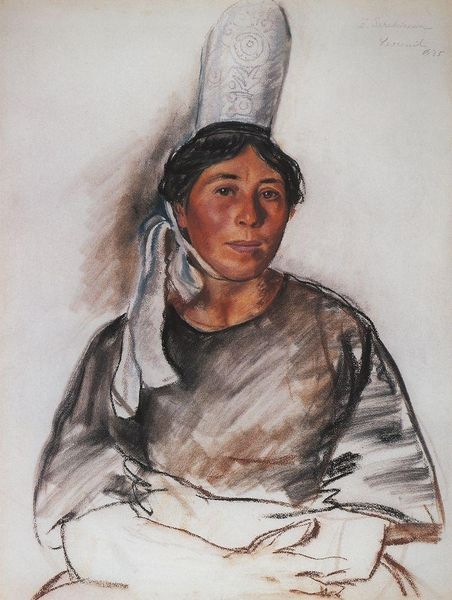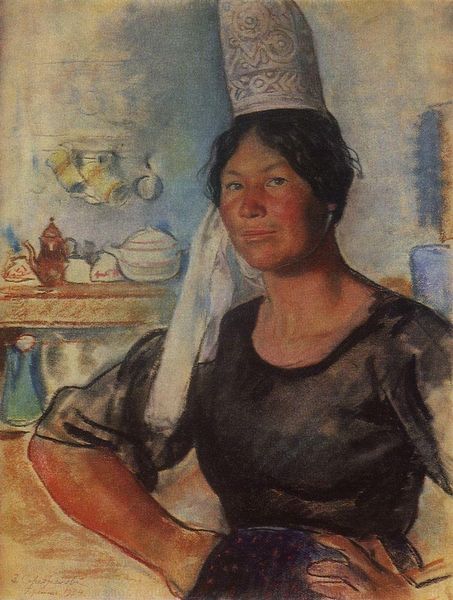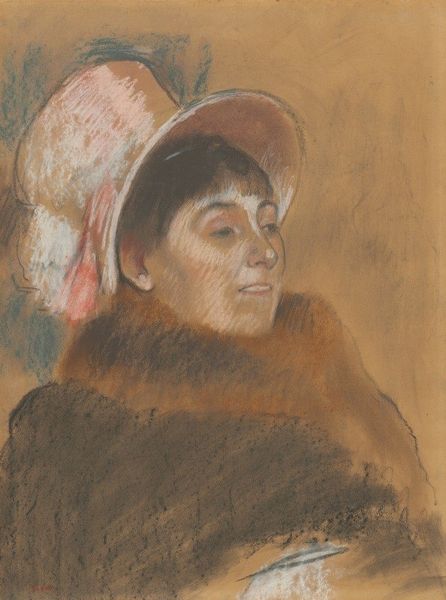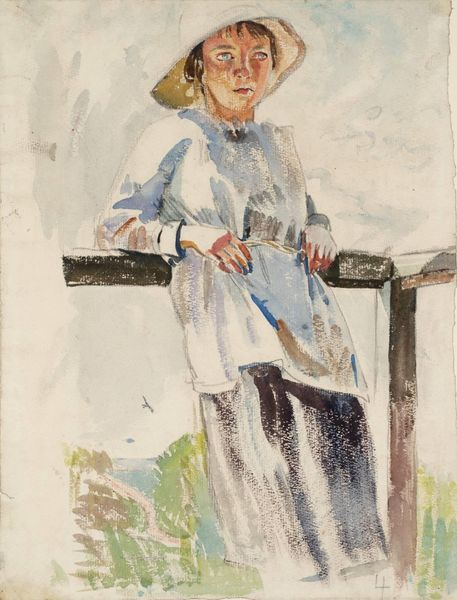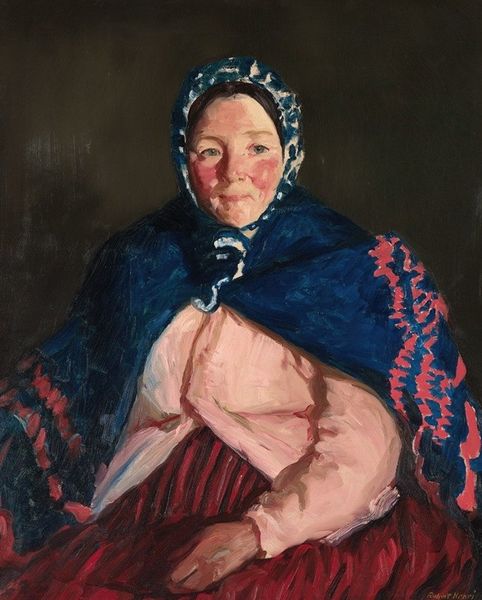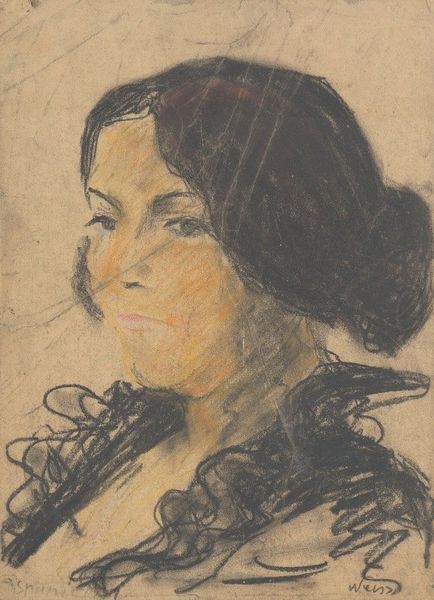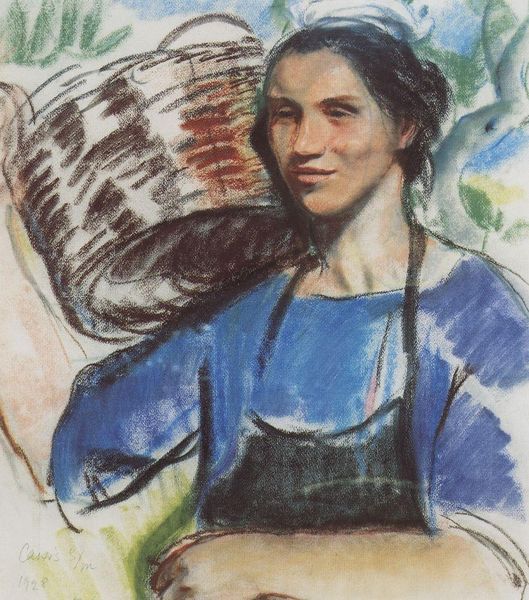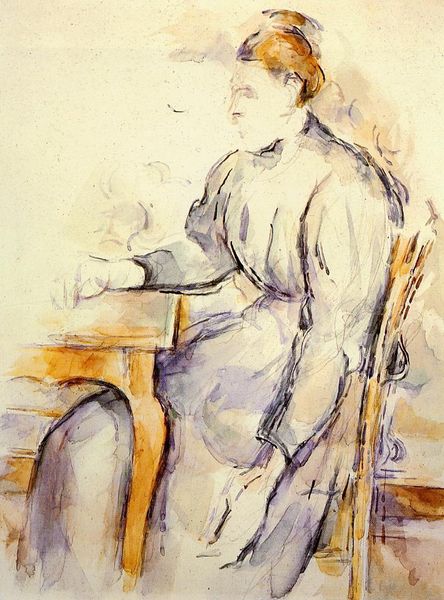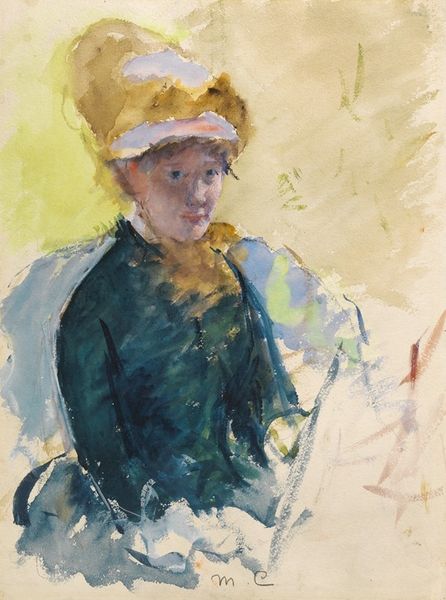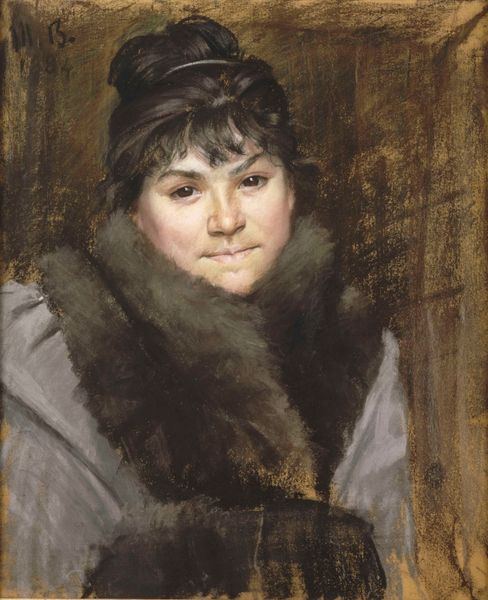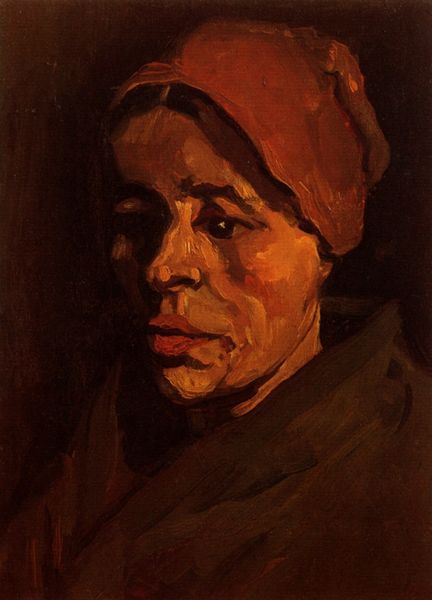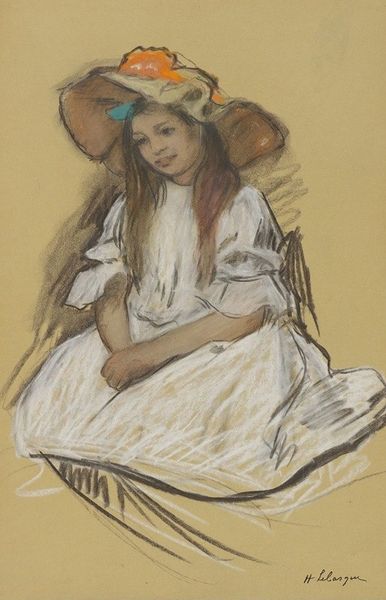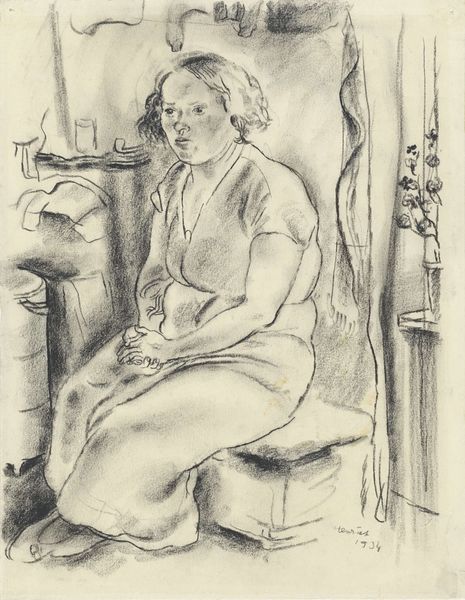
Copyright: Zinaida Serebriakova,Fair Use
Curator: Here we have Zinaida Serebriakova’s "Hostess Bistro Mon ABBE," created in 1934. It's a striking portrait. My first thought? The light in her cheeks gives her such a wonderful presence. Editor: Immediately, I see the cultural signifiers layered into this image. The headdress especially speaks to specific regional identities, particularly in Brittany during that period. What do you feel about its historical setting? Curator: The bottles on the shelf behind her almost fade into the background, they remind me of forgotten conversations… lost stories whispered between the glasses. Serebriakova painted primarily in pastels and oils; the pastel technique in this artwork gives the piece a soft, almost dreamlike, quality, wouldn't you say? Editor: Precisely. This 'dreamlike quality' shouldn't make us forget the socio-economic realities shaping women's roles in the 1930s, when few women, and especially peasant-background women, had real agency or financial stability. The artist shows, perhaps unwittingly, the reality of women working as labor. Do you have similar views? Curator: I feel that perhaps this artwork also captures a specific moment in her life, frozen in time. It’s fascinating that Serebriakova comes from an artistic family. Do you know if this background affected her own representations of women? Editor: Undoubtedly. Her positioning within a family of artists shaped her understanding and representation of women. It's a powerful perspective from an insider—though her upper-class background may have somewhat detached her from this bistro hostess’ lived experience. We must examine how class and privilege inevitably affect vision. Curator: Yes, but ultimately Serebriakova allows this woman in the "Hostess Bistro Mon ABBE" a place… she exists outside the formal constructs. Editor: In that sense, despite possible misinterpretations, the artwork has merit—initiating discourse surrounding representation, identity, and historical context is undeniably important. Thank you, this conversation really shifted my perspectives! Curator: Yes, engaging with the complex interplay of technique, history and personal narratives brings this work into sharp focus, leaving us plenty to think about.
Comments
No comments
Be the first to comment and join the conversation on the ultimate creative platform.
